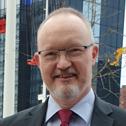Algorithm spots common sleep disorder linked to dementia

Researchers in the US have shown that an artificial intelligence algorithm trained to analyse video recordings of sleep tests can identify REM sleep behaviour disorder (RBD) – an early warning signal for some serious neurological diseases.
The team behind the work – led by scientists at Mount Sinai Hospital – said that RBD can occur in otherwise healthy adults, affecting around a million people in the US and 80 million worldwide, but "in nearly all cases, is an early sign of Parkinson's disease or dementia."
People with RBD physically act out vivid and often unpleasant dreams with vocal sounds and sudden, violent arm and leg movements during REM sleep, a stage that makes up around 20% of a full night's sleep. Usually, there is no movement during REM sleep, which is typically when dreaming occurs.
The onset of RBD is generally gradual, but can worsen over time, and in severe cases can result in injury to the patient or a sleeping partner. It is very hard to diagnose, typically needing a nocturnal sleep study or polysomnogram that will involve an overnight stay in a sleep lab, and can often be confused with other disorders, according to the researchers.
In their study – published in the journal Annals of Neurology – the researchers suggest that, while video data is systematically recorded during a sleep study, "it is rarely reviewed and is often discarded after the test has been interpreted."
One major issue is that – because sheets or blankets can obscure RBD activity – there has been a view that very expensive, research-grade 3D cameras, which are not widely available, are needed to detect the disorder.
However, the Mount Sinai team say that can be circumvented by applying their algorithm to regular 2D cameras, claiming a diagnostic accuracy rate in the study of almost 92%. Their study focused on recordings at a sleep centre of about 80 RBD patients and a control group of about 90 patients without RBD who had either another sleep disorder or no sleep disruption.
"This automated approach could be integrated into clinical workflow during the interpretation of sleep tests to enhance and facilitate diagnosis, and avoid missed diagnoses," said corresponding author Emmanuel During, a specialist in movement disorders and pulmonary, critical care, and sleep medicine at the Icahn School of Medicine at Mount Sinai.
"This method could also be used to inform treatment decisions based on the severity of movements displayed during the sleep tests and, ultimately, help doctors personalise care plans for individual patients," she added.
Photo by Jason Abdilla on Unsplash












